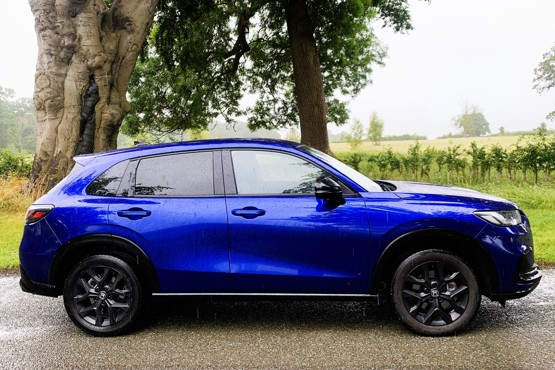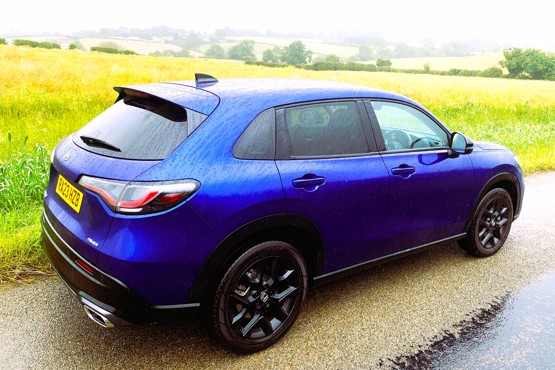AM discovers why the Honda ZR-V e:HEV is such a standout transitional candidate for those EV-curious souls seeking real-world efficiency.
Owning the same car for any length of time imprints the experience indelibly in the cerebral cortex so the ability to compare performance with a similar car requires little effort.
So the opportunity to swap a trusty 2017-plate 1.6 litre Nissan Qashqai for the Honda ZR-V medium SUV offered the opportunity to compare plenty.
The Qashqai has always offered a good balance between ride comfort and handling with responsive steering and little in the way of body roll.
Of course, with the prospect of embracing full-on electric proving a little daunting in as much as concern over whether the nation’s infrastructure will keep pace with EV adoption, the Honda’s ZR-V represents a compelling advanced hybrid petrol option in the medium SUV segment.
Over the last three months, this long-term test drive has blended performance, efficiency, and superb fuel efficiency thanks to a fusion of ICE and electric motor technology.
Performance and Efficiency
The ZR-V’s hybrid powertrain combines a 2.0-litre Atkinson-cycle engine with twin electric motors, delivering a robust 181bhp performance comparable to traditional 3.0-litre ICE equivalent, with a 0-62mph time of 7.8 seconds.
Best-of-all-worlds WLTP figures indicate CO2 emissions of 130g/km and a combined fuel economy of 49.5mpg. Real-world driving, however, reflect a certain variability depending on driving conditions, with motorway driving yielding an mpg in the high 30s while slower, mixed roads and urban settings is where the ZR-V efficiency kicks in certainly in the high 40s.
How the ZR-V powers the hybrid experience
The transition between electric and petrol modes is seamless, ensuring a quiet and comfortable ride, particularly on city roads where the electric motor handles most of the work – there’s even a dashboard option which tells you which powertrain is actually driving the car.
That makes for a smooth and responsive driving experience especially in tactical urban manoeuvring. The vehicle’s stability at high speeds, controlled body roll, and precise steering further make it a reliable companion for both city commutes and long-distance travel. AM plans to cover the driving experience in more detail in its next look at the Honda ZR-V.

Cost and Value
With a starting price of £39,495, plus optional add-ons for metallic finishes, the ZR-V is admittedly on the higher end of the medium SUV market.
While it faces stiff competition from similarly priced rivals like the Nissan Qashqai and the Hyundai Tucson, the Honda ZR-V offers a compelling blend of efficiency, performance, and features that justify its cost.
A limited-time financing offer and deposit contribution further enhance its value proposition, making it a worthwhile consideration for buyers seeking a well-rounded hybrid SUV.
The offer which ends on September 30, allows buyers to benefit from a 6.9% APR with a £2,500 deposit. Based on 37-month Personal Contract Purchase (PCP) deal, the total amount payable on a ZR-V e:HEV Full Hybrid Elegance is £44,757.73 at £439 per month.
Supported by a comprehensive ownership package of a five-year service plan; five-year warranty; and five-year roadside assistance, makes the ZR-V an even more attractive proposition.

Verdict
The Honda ZR-V stands out in the medium SUV market with its advanced hybrid powertrain, and impressive fuel economy, While it carries a premium price tag, the current promotional offer significantly enhances its value for money. Backed by Honda’s reputation for reliability, the ZR-V is an appealing option for those in search of, above all, an efficient car.
Price: From £39,495
Engine: 1993cc four-cylinder hybrid
Power: 104bhp @ 6000rpm, 137lb ft @ 4500rpm (plus 135kW electric motor)
Transmission: Single-speed automatic, front-wheel drive
Performance: 7.9 sec 0-62mph; 107mph,
Efficiency: 48.7mpg, 131g/km CO2



